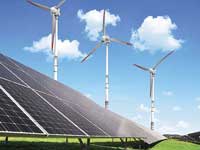Punjab Green Hydrogen Policy
<p>The Punjab Energy Development Agency has released a draft green hydrogen policy aiming to achieve a green hydrogen and ammonia production capacity of 100 kilo tonnes per annum by 2030. The policy proposes
<p>The Punjab Energy Development Agency has released a draft green hydrogen policy aiming to achieve a green hydrogen and ammonia production capacity of 100 kilo tonnes per annum by 2030. The policy proposes
<p>Excess nutrient inputs and climate change are two of multiple stressors affecting many lakes worldwide. Lake Vansjø in southern Norway is one such eutrophic lake impacted by blooms of toxic blue-green

Surat: The Surat Municipal Corporation (SMC) produces nearly 40MW of green energy from wind, solar and biogas. Another 10MW of energy will be produced in the next 12 months. Ministry of New and Renewable
Imagine building a small pile of wood and kindling in the smallest room in your house, and setting fire to it. You can keep the door open, to let out some smoke, but cannot switch on an extractor fan.
Climate change impacts pose significant hazards for socio-economic development in Kenya, through prolonged droughts, unreliable weather patterns, and the emergence of new pests and diseases.Under the Paris
<p>India’s ambitious target of achieving 100 gigawatts of installed solar energy capacity by 2022 has received a setback, with the parliamentary panel on energy expressing disappointment with the government’s performance in the sector so far. The committee feels that at the current rate, the target will be very difficult to achieve.</p>
The Government of Haryana has formulated Haryana Bio-energy Policy 2018 to promote generation of energy from the surplus biomass in the State. Biomass energy is replenishable over a cycle that may vary
FAO Global Forest Resources Assessment (FRA) provides essential information for understanding the extent of forest resources, their condition, management and uses. This document provide information about

Wood residues form Finland’s main source of bioenergy. About half of the country’s wood production is used for heat and power, either through district heating systems or through combined heat and power
The majority of rural Indian households remain dependent on unreliable, inefficient and harmful household energy technologies. Rural households make their energy decisions with respect to the Water-Energy-Food

A task force constituted by Niti Aayog on biomass management has pitched for providing financial support to those farmers who have not burnt their crop residues. The burning of agricultural residues leads